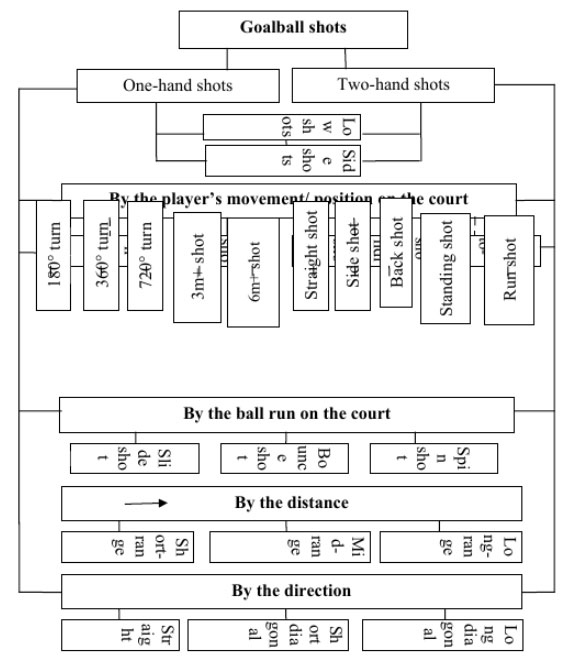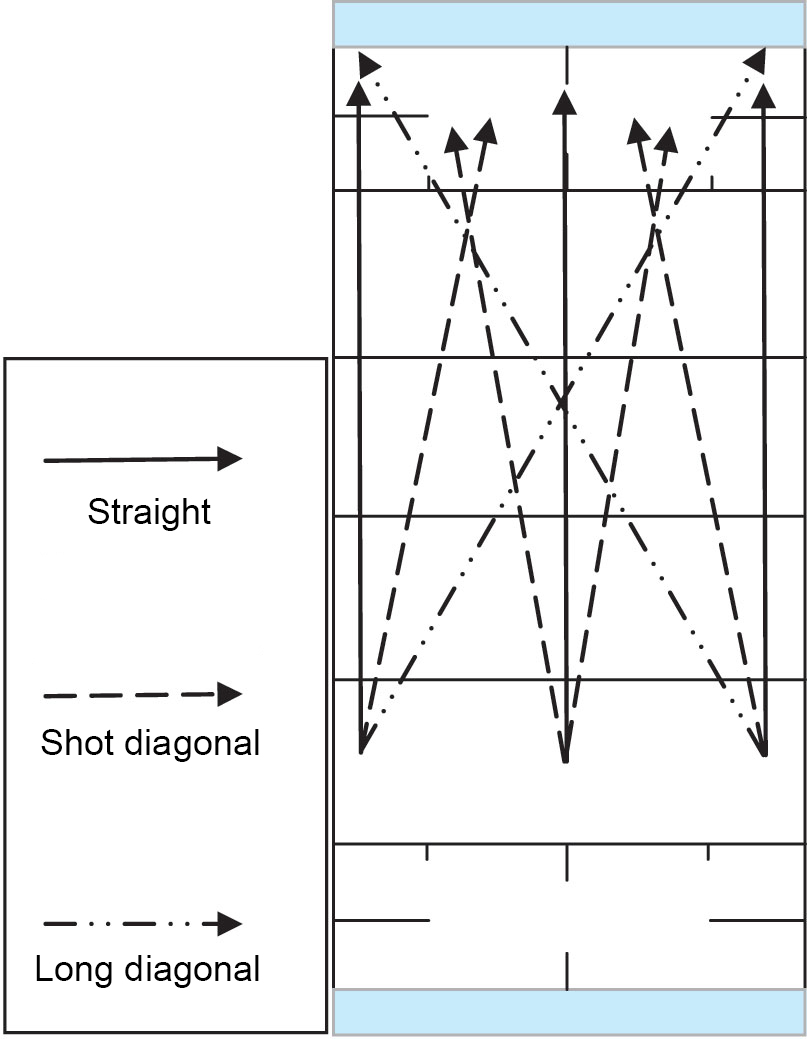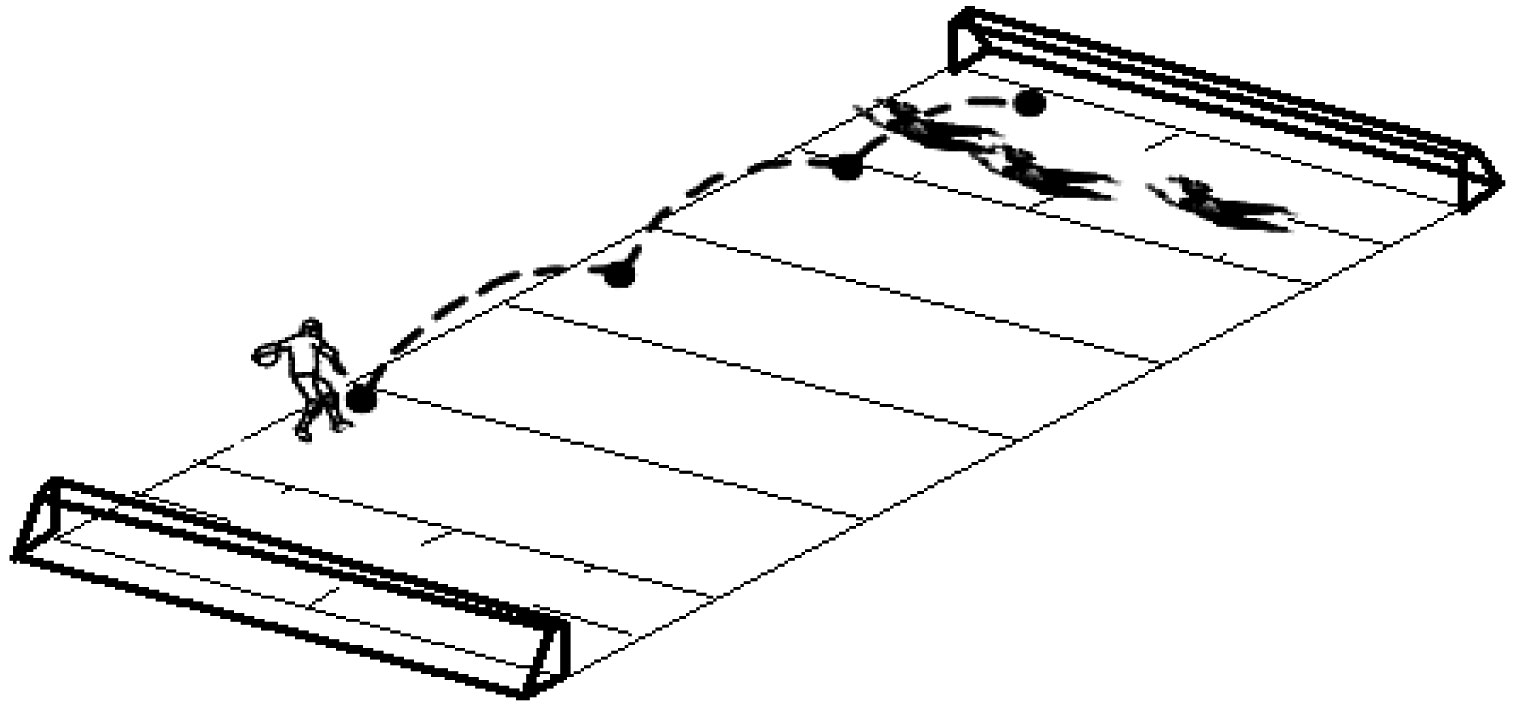Shots in goalball: specifications and classification
Фотографии:
ˑ:
PhD, Associate Professor A.V. Kornev1
Dr.Hab., Professor M.A. Pravdov1
1Russian State Social University, Moscow
Keywords: game technique and tactics, goalball, classification, shots on goal.
Background. Modern goalball is making a fast progress due to the growing global competitiveness with the fast advancements in mastery of the players both in the technical and tactical aspects. One of the challenges of goalball is the shortage of reasonable theoretical and practical classifications of shots and shooting techniques. The national theoretical and practical research literature is still regretfully short of publications with concern to basic classifications of individual, group and team technical and tactical actions, and this shortage is of negative effect on the training and competitive system planning, goal-setting and management for the beginner and professional goalball teams [3]. The study makes an attempt to classify the goalball shots in the context of tactical goals and game situations.
Methods and structure of the study. To classify the key characteristics of the shots on goal in goalball and offer their classification, we have analyzed 60 matches of the men’s and women’s teams competing in the national championships with the match videos applied for analyses of the shooting techniques and their phases.
Study results and discussion. Shots on goal in goalball are intended to succeed in attacks, with the shooting accuracy and strength rated among the top qualities for success of the scoring shots. Based on the study data and analyses we basically classified the shots as follows: run shots, standing shots, one-hand shots, two-hand shots, spin shots, turn shots etc.: see Figure 1.

Figure 1. Shots classification in goalball
One-hand shots may be classified into standing, run, turn, low and side shots, with the spins (sides) on the ball applied as required by the situation. Standing one-hand shots are classified into straight, side and back-to-goal shots varied as required by the situation: e.g. when a run shot or other shot cannot be made due to time pressure; or a player is physically fit and skilled enough to make a strong and accurate standing shot; or the shot is dictated by game tactics including tricks. Given on Figure 2 hereunder are the standing one-hand shot phases found by the analysis of the video captures: 1 – Starting position; 2 – Swing-up; 3 – Stretched bow phase; 4 – Final action; 5 – Shot follow-up phase.

Figure 2. Standing one-hand shot phases (junior male player)
Run one-hand shot is arguably the most popular shot in goalball. It may be basically classified into the two-four-step 3-plus meter and run 6-plus meter shots; with the latter (long-range) shots made mostly by the highly technically and tactically skilled and experienced players. Run one-hand shot implies the player being skilled enough to control the run and shot with no violation of the goalball rules item 24 [4] that requires that the ball should touch the court at least once in a point 6-plus meters afar from the goal otherwise the violation is fixed and penalized. The shooting player must return to defense as soon as possible for the reason that he/she is often attacked right after the shot as presumably the least ready for defense. Given on Figure 3 hereunder are the run one-hand shot phases: 1 – Starting position; 2 – First strides and preparation; 3 – Dead point; 4 – Swing up and final strides; 5 – Stretched bow phase; 6 – Final action; 7 – Shot follow-up phase.

Figure 3. Run one-hand shot phases (junior female player)
Turn one-hand shot is ranked among the most difficult complex coordinated actions. It can be provisionally classified into 180º turn and 360º turn shots. The 180º turn shot is made off own goal, with the player in the starting position standing back to the opponent’s goal holding own goal bar with one hand. Having pushed off the goal, the player would make 2-4 strides making a 180º turn with a shot on the opponent’s goal.
The 360º turn one-hand shot is ranked among the most difficult techniques, with the ball speed accelerated by the 360º body rotation around the axis. When making the shot, the player continues moving towards the goal to make the shot as close to the 6m line as possible. Some outstandingly gifted and technically skilled players can now make even 720º turn one-hand shots, as was the case in the 2014 World Championship in the men’s final when the Finnish player tried it twice against the Brazil team. Given on Figure 4 hereunder are the 360º turn one-hand shot phases: 1 – Startup position; 2 – First strides and preparation; 3 – Dead point; 4 – Turn, swing up and final strides; 5 – Stretched bow phase; 6 – Final action; 7 – Shot follow-up phase.

Figure 4. 360º turn one-hand bounce shot phases (junior male player)
Two-hands shot is applied mostly by beginner players albeit even some top-level professional players may occasionally resort to it in the top-ranking international events. This type of shot may be classified into low, side and back-to-goal shots – with the last one being very seldom and specific in many aspects.
Furthermore, goalball shots may be classified by the shot ranges and directions. In beginner goalball, long shots are made from own gates or 1.5m line; mid-range shots are made from 3m line, and the closest shots are made from the 6m line. The shots may be further classified into straight, shot diagonal and long diagonal shots: see Figure 5.

Figure 5. Shots on goal classification
Straight Shot diagonal Long diagonal
Goalball shots may be further classified into slide and bounce shots. The slide shots are dictated by the game tactics to score fast and unexpectedly for the opponent, with the ball shot with maximal speed. The bounce shot is designed to distract the opponent and send it over the defense: see Figure 6.

Figure 6. Bounce shot in goalball
The shooing player must be highly skilled to find the shooting angle and moment for the bounce shot to be most difficult for the opponent. Presently the bounce shot is applied mostly in the men’s teams.
The modern goalball training and educational systems are recommended to be designed so as to develop every muscle group, with the shots alternatively performed both by dominant/ leading and other hand [1]. As was mentioned by Y.P. Ilyin [2], long-term trainings with high loads in the asymmetric sports may result in functional/ anthropometrical asymmetries in some bodily parts including those that were symmetrical prior to the practices. Therefore, the coaching teams are recommended to reasonably apply the symmetry-focused practices, particularly in the shooting techniques mastering and excelling process – with the knowledge that the players equally masterful in both-hand shots have serious advantages in the sport.
Conclusion. Presently attacks in goalball depend on many factors of influence on success of the team technical and tactical actions and patterns. Shots on goal ranked the key offensive action in goalball can be classified as follows: (1) one-/two-hand shots; (2) shots different in player’s position; 3) shots different in ball trajectories; (4) shots different in distances; and (5) shots different in directions. In the youth women’s goalball, the shooting techniques are dominated by the run one-hand slide shots, and in the men’s teams by the 360º turn one-hand slide/ bounce shots. The proposed classification demonstrates the high versatility of the modern goalball shots applicable as required by the specific game situations.
References
- Goroshnikov E.N., Ivanov M.M. Sportivnye igry dlya nezryachikh. Metodicheskoe posobie [Sports games for the blind. Teaching aid]. Moscow: VOS publ., 1988, 56 p.
- Ilyin E.P. Psikhomotornaya organizatsiya cheloveka. Uchebnik dlya vuzov [Psychomotor organization in man. Textbook for universities]. St. Petersburg: Piter publ., 2003, 384 p.
- Kornev A.V., Pravdov M.A. Tekhnika i taktika igry v golbol [Goalball game techniques and tactics]. Teoriya i praktika fiz. kultury, 2017, no. 4, pp. 20-22.
- Goalball – Rules: [Electronic resource]. Official website of IBSA - International Blind Sports Federation. Available at: http://www.ibsasport.org/sports/files/733-Rules-2018-2021-IBSA-Goalball-Rules-and-Regulations-(v-1.1.10.pdf (date of access: 11.01.2018).
Corresponding author: av-kornev@mail.ru
Abstract
Goalball as a sport for visually impaired athletes in the existing system of adaptive sports has never been analyzed to offer theoretical and practical basics to classify the players’ techniques and actions. It should be noted that the modern goalball techniques are very versatile, complicated and evolve within the frame of the sport-specific rules, outfits and the refereeing service system being customized to the individual health deficiencies and physical fitness levels. Therefore, we believe it might be beneficial to at least classify the shooting techniques versus the relevant tactical combinations.
The article analyzes the modern goalball offensive techniques and tactics with an emphasis on the shots on goal. There are grounds to conclude that it is the shots on goal that may be ranked the key offensive action in goalball that can be classified as follows: (1) one-/two-hand shots; (2) shots different in player’s positioning; 3) shots different in ball trajectories; (4) shots different in distances; and (5) shots different in directions. The proposed classification demonstrates the high versatility of the modern goalball shots applicable as required by the specific game situations.




 Журнал "THEORY AND PRACTICE
Журнал "THEORY AND PRACTICE